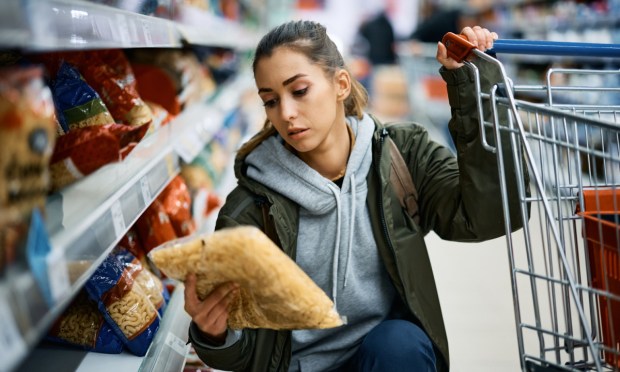Shoppers Strain Under Burden of Ongoing CPG Price Hikes

As leading consumer-packaged goods (CPG) brands continue to raise their prices slowly but persistently, shoppers who are on the fence are looking for more affordable options.
According to a Reuters report Monday (April 15), Procter & Gamble is finally expecting its price increase contribution to sales growth to decrease going forward after nine consecutive quarters of raising prices more than 1%. These hikes contributed to the brand’s sales increase of close to 16% over the past three years.
Yet for most consumers, there is only so much they are willing to take when it comes to inflation. The PYMNTS Intelligence study last year, “Consumer Inflation Sentiment: The False Appeal of Deal-Chasing Consumers,” found that only 20% of shoppers are loyal customers, willing to stick with their favorite brands through periods of price inflation.
In contrast, far more — 46% — are deal chasers, willing to go wherever they will get the best price. Plus, another 34% are persuadable customers, who want to be loyal but can be wooed away by competitors for the right price.
Indeed, many consumers have been making these kinds of tradeoffs, according to the February/March PYMNTS Intelligence study “New Reality Check: The Paycheck-to-Paycheck Report: Why One-Third of High Earners Live Paycheck to Paycheck.”
The study, which drew from a survey of more than 4,000 U.S. consumers, found that 60% of shoppers have cut down on nonessential retail purchases, and half have turned to cheaper retail merchants due to product price increases. Plus, 45% of low-income shoppers (those who make less than $50K annually), 41% of middle-income ($50K to $100K), and 28% of high-income shoppers said they had traded down on quality in the previous year.
Indeed, CPG giants are seeing inflationary pressures impact consumers’ spending.
“Looking ahead, we expect the operating environment to remain challenging, as consumers remain under pressure and their value-seeking behaviors continue,” Clorox Chair and CEO Linda Rendle told analysts on the company’s last earnings call.
In fact, these behaviors can be seen internationally.
“The main drag on volume was in Europe where we … continue to see the impact of consumer down-trading to private label,” Unilever CEO Fernando Fernandez said on a call February discussing the company’s latest financial results.
While consumers continue to want known, trusted brands, they are willing to shift from their previous favorites if the price increases strain their budgets too much, as Louise Fritjofsson, co-founder of online overstock grocery seller Martie, told PYMNTS in a recent interview.
“Our users are … not coming to buy the same brand again and again,” she said. “They want to see that they recognize brands in the experience, and then they are going to shop for the best price.”

